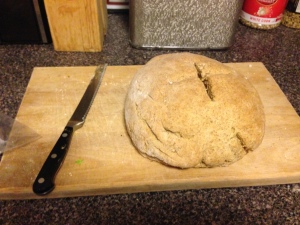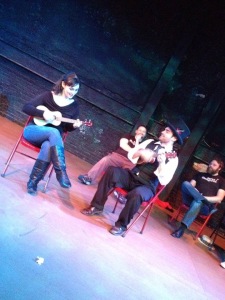What with finals around the corner and the end of the semester only kind of in sight, it can be tough for us grads to really enjoy what’s supposed to be a day off to reflect about all the things that make our lives pretty great.
While I can’t promise that I’ll refrain from opening a book until Campus opens again on Monday (our break is Wednesday – Sunday), I can honestly say that I’m going to take at least a moment to honor the spirit of the holiday.
To make sure I do, the following is a partial list of some of the things I am thankful for this year:
- My incredible advisor who is a super hero, rock star, and academic pit bull all in one. Seriously, this lady is unbelievable. The fact that she does all of the things she does (president of this professional organization, top of that research field, leading expert in all kinds of things, teacher, mentor, philosopher…) is a feat of its own, but on top of everything she makes herself so available to her students. She has done more for me this year than I think I can possibly relate in words, and I am thankful every day for her guidance and wisdom.
- For that matter; all of my mentors (past, present, and future). They let me ask potentially embarrassing questions without judging me (or at least without telling me that they’re judging me, which is really what counts), they even give me valuable answers despite their own packed research and travel schedules. Every day in dealing with my own students, I only hope to be as awesome to them students as my mentors have been to me.
- The well-stocked school library with ILL privileges that will get me anything I need from anywhere in the world in a reasonable enough time. With a slight bit of forethought, I can have any book that I might want to put my hands on delivered to me so that I can read and love it. Hooray.
- A supportive partner who knows when he needs to leave me alone so that I can deal with some red pen problems, when he needs to ask me questions about my work so that I can talk my way out of a funk, and when he just needs to let me cry at him about Edwin Booth.
- Good smart friends and colleagues with sympathetic ears, appetites for good beer, and heads full of giant brains. As a note: should this year be the year of the inevitable zombie apocalypse, this item of gratitude to the universe would be written no differently. Brains.
- Lots of tea. And espresso. Oh my espresso machine. And really anything that makes liquid caffeine. As a note: the rest of the world should also be thankful for this and the effect that it has on me. Nobody wants to deal with an uncaffeinated Dani. Trust me.
- All of the wonderful theatre companies who continue to include me in their creative plans. I’ve had the opportunity to work with a great many incredible theatre-makers this year, and I look forward to continued opportunities to come.
Alright folks, that’s that. Go eat some turkey and be thankful that you’re not on line at the grocery store. Unless you are in which case you might want to consider how planning impacts your life, stress, and happiness.
Have a great holiday!





